Idea by
Antonio Bagni, Diego Detassis, Giulia Pagliacci, Cristina Setti, Federico Tomaselli
ND Studio
https://www.nd-nodump.it/studio/
Call for ideas 2020
STEP by STEP
STEP by STEP
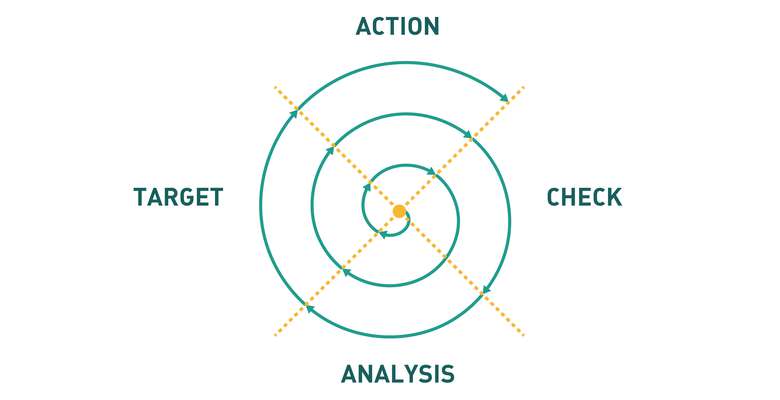
- Systemic changes
Our solution is focused on providing a tool for co-design of public spaces according to the needs of final beneficiaries, for this reason, to build user-driven instruments, we need to test our prototype with users.
This will allow us to calibrate our service according to beneficiaries habits and different ways of interacting with space, considering conditions as age, culture, etc. This is crucial to develop a service that can be suitable in different conditions and inclusive.
Moreover, the direct involvement of users in the prototyping, with complete monitoring and evaluation, will give us valid feedback for a future design of space.
Using a temporary architecture related to circular economy, we boost and encourage change through a gradual system that, allowing a deferment of investments, makes it more affordable and achievable.
The architect is no more the great puppeteer of space but becomes a mediator, serving space and, above all, who lives and will live it in the future.
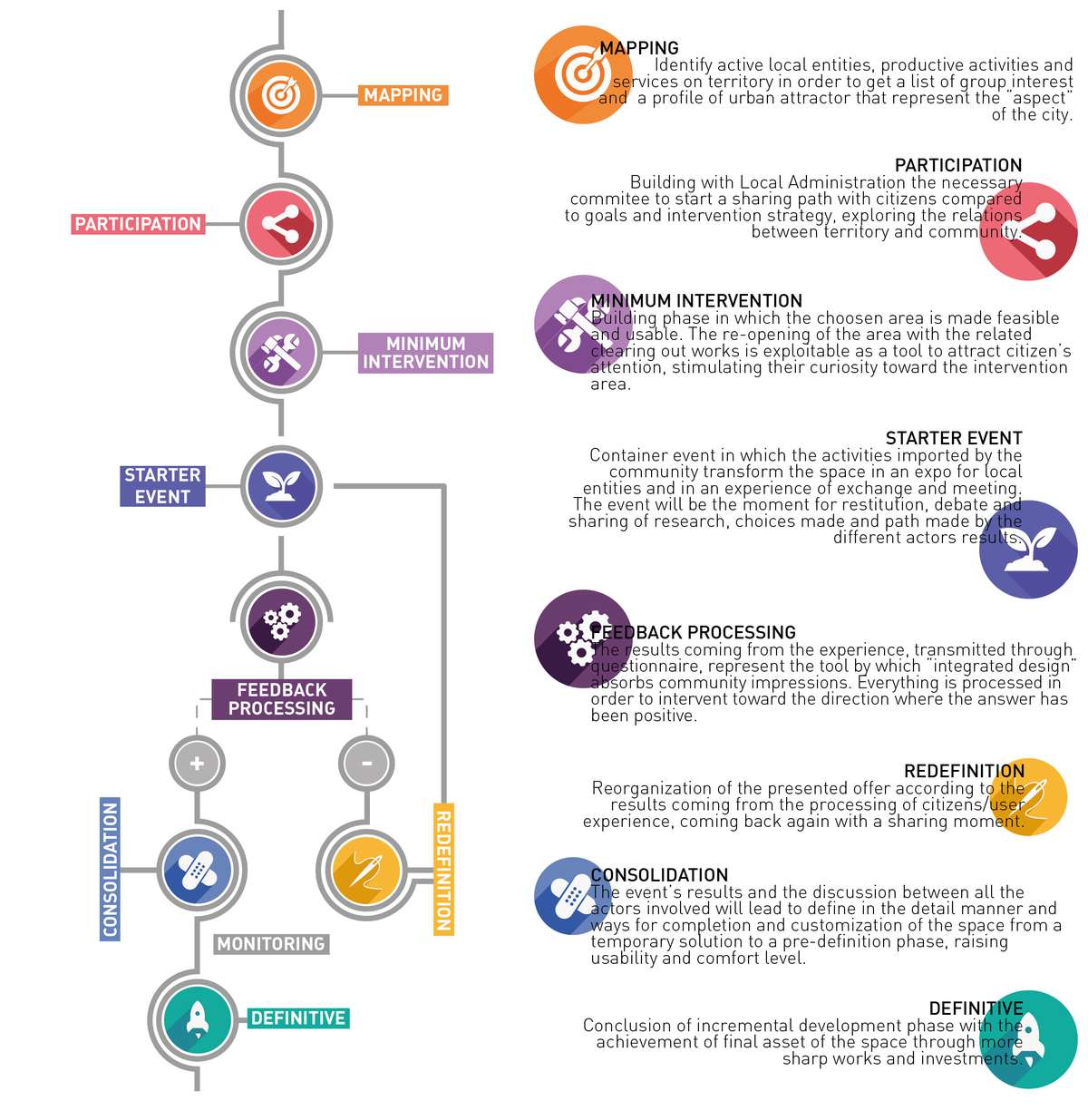
Application diagram of the adaptive process
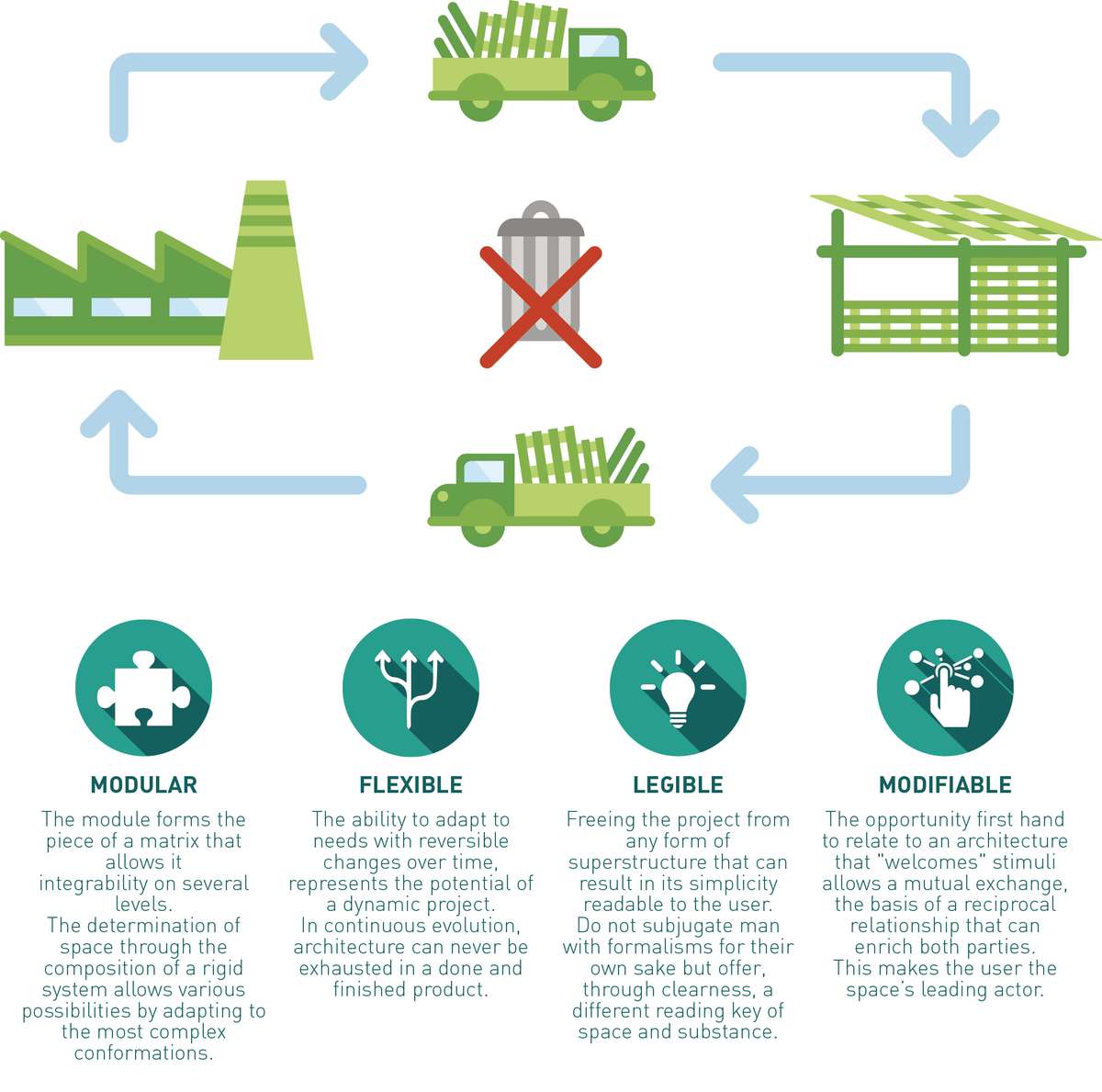
Circular economy and main principles of the process and its temporary architectural devices

Examples of temporary architectural devices
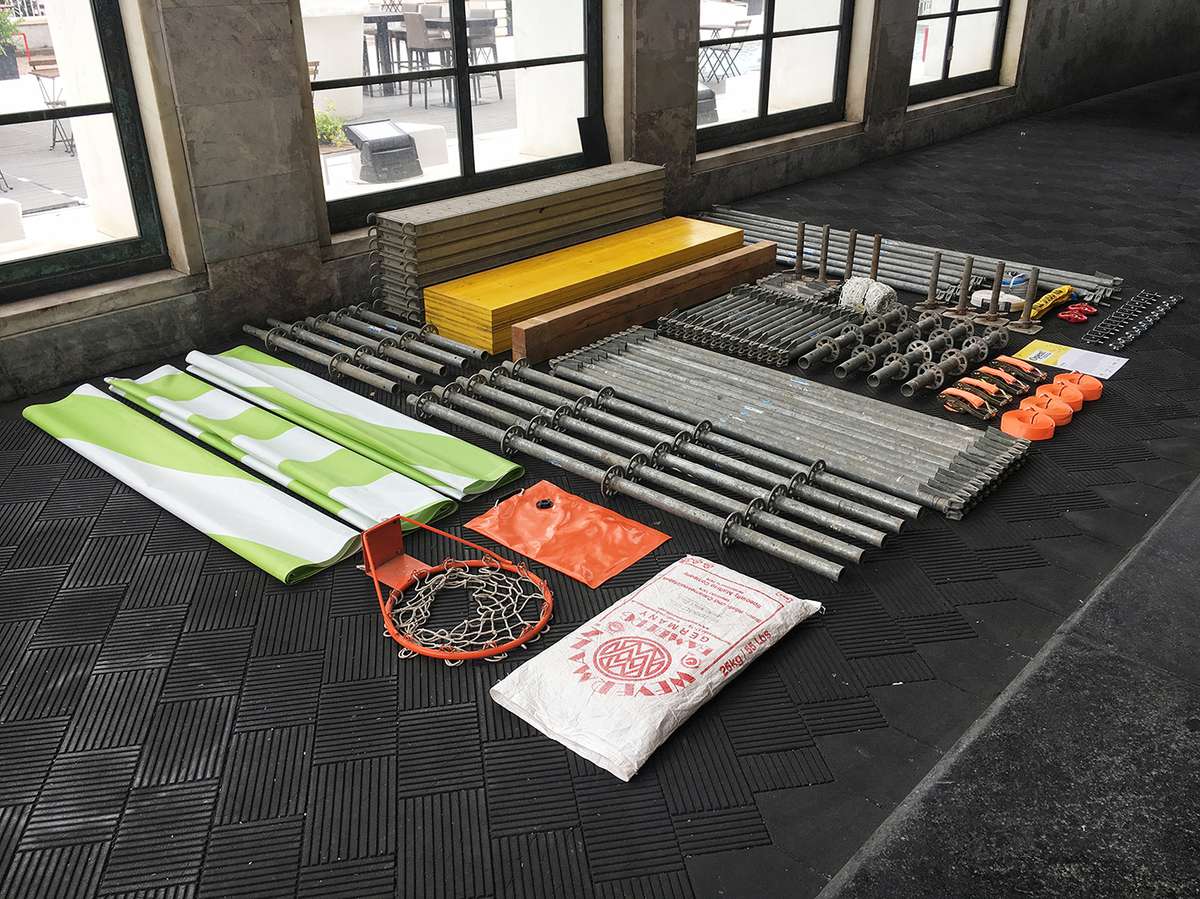
Components used for the prototyping of various modules. All materials has been rented, joined each other without using screws or glues and returned at the end of the prototyping.
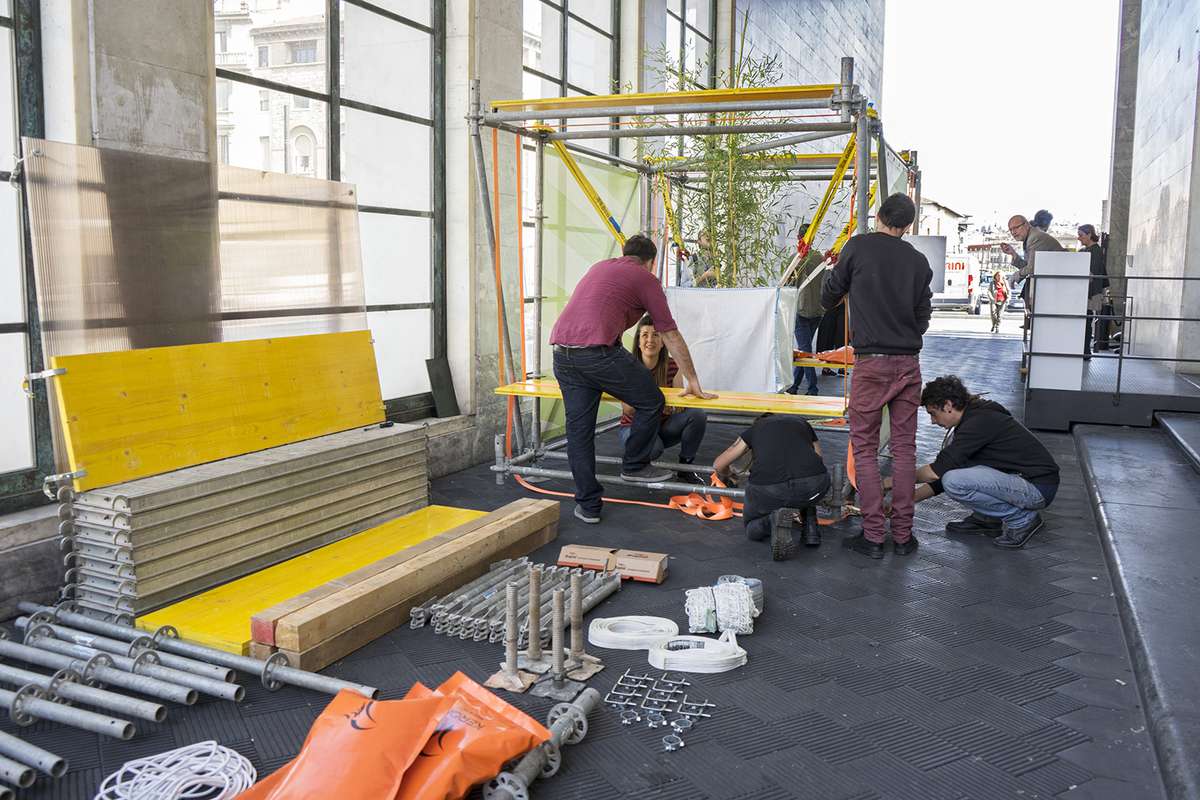
The simplicity of the elements allows a fast and continuos changing through time, according to needs and desires; for this reason this devices could represent an appropriate investigation tool
STEP by STEP
STEP by STEP

- Systemic changes
Our solution is focused on providing a tool for co-design of public spaces according to the needs of final beneficiaries, for this reason, to build user-driven instruments, we need to test our prototype with users.
This will allow us to calibrate our service according to beneficiaries habits and different ways of interacting with space, considering conditions as age, culture, etc. This is crucial to develop a service that can be suitable in different conditions and inclusive.
Moreover, the direct involvement of users in the prototyping, with complete monitoring and evaluation, will give us valid feedback for a future design of space.
Using a temporary architecture related to circular economy, we boost and encourage change through a gradual system that, allowing a deferment of investments, makes it more affordable and achievable.
The architect is no more the great puppeteer of space but becomes a mediator, serving space and, above all, who lives and will live it in the future.
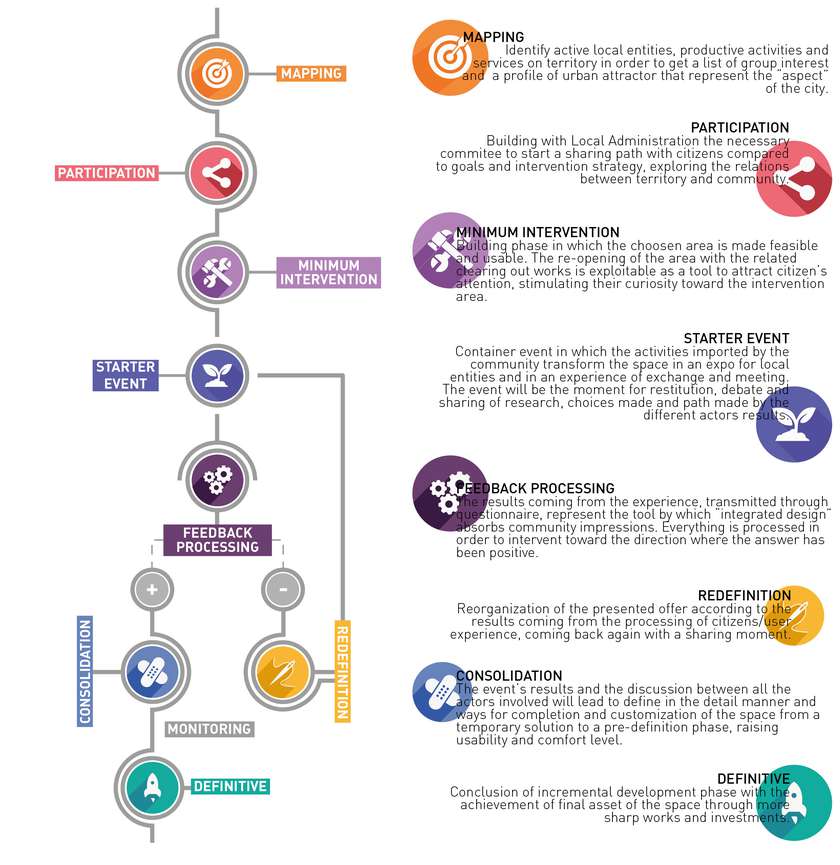
Application diagram of the adaptive process

Circular economy and main principles of the process and its temporary architectural devices

Examples of temporary architectural devices
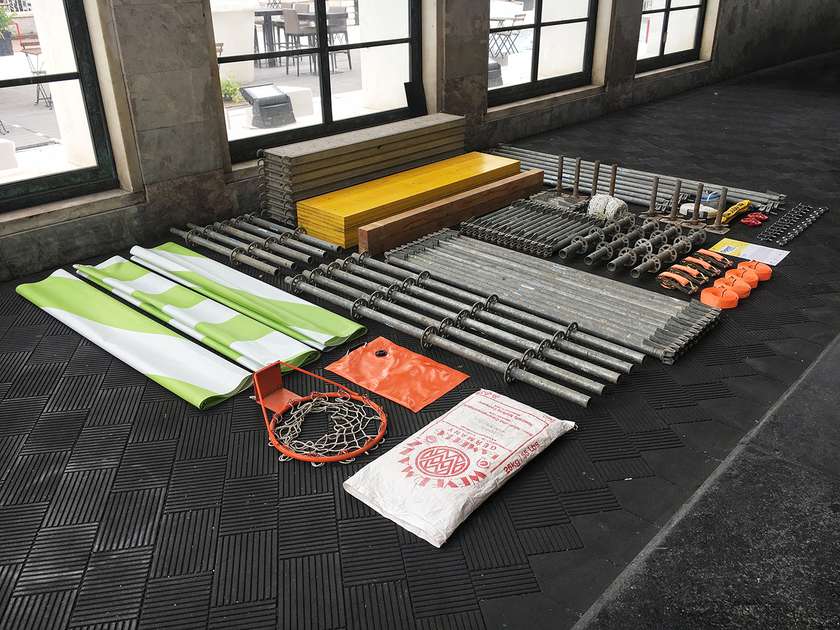
Components used for the prototyping of various modules. All materials has been rented, joined each other without using screws or glues and returned at the end of the prototyping.
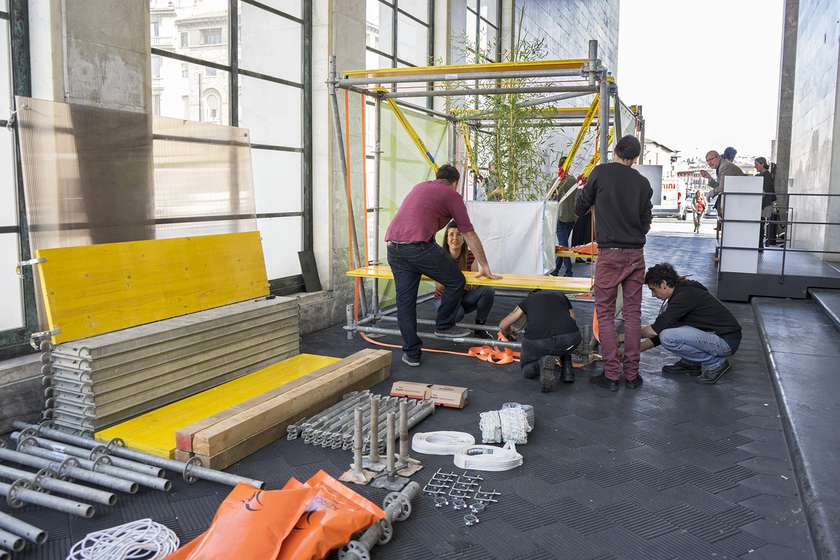
The simplicity of the elements allows a fast and continuos changing through time, according to needs and desires; for this reason this devices could represent an appropriate investigation tool